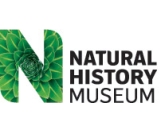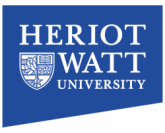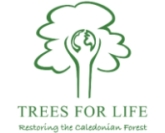
The Natural History Museum is one of three large museums on Exhibition Road, South Kensington, London (the others are the Science Museum, and the Victoria and Albert Museum). Its main frontage is on Cromwell Road. The museum is a non-departmental public body sponsored by the Department for Culture, Media and Sport.
The museum is home to life and earth science specimens comprising some 70 million items within five main collections: Botany, Entomology, Mineralogy, Palaeontology and Zoology. The museum is a world-renowned centre of research, specialising in taxonomy, identification and conservation. Given the age of the institution, many of the collections have great historical as well as scientific value, such as specimens collected by Darwin. The Natural History Museum Library contains extensive book, journal, manuscript, and artwork collections linked to the work and research of the scientific departments.
Find out more at: www.decadeonbiodiversity.net

We are a leading player in the construction industry, committed to creating a better built environment. We produce and supply a wide range of construction materials including aggregates, asphalt, ready-mixed concrete and precast concrete products. We also import and supply cement materials and offer a national road surfacing and contracting service. As a major supplier of materials to the construction industry we are very aware of the impact our products have on people, the environment and the economy. We contribute to more sustainable forms of construction in many ways. From replacing ingredients in our concrete and asphalt products with recycled or less carbon embodied alternatives, to the development and promotion of new innovative systems of construction, such as the use of concrete to maximize the thermal mass in buildings. We see our goal as creating better built environments not only through the provision of the highest quality and most sustainable materials, but also through working closely with our customers, clients and other partners in the supply chain to find the best solution.

Heriot-Watt’s Centre for Marine Biodiversity & Biotechnology co-ordinates biodiversity research in the marine environment across the University with academic projects currently taking place in a variety of locations from the UK to the Caribbean. The group works on a variety of systems from shallow intertidal to deep-sea cold-water coral habitats. We run a public outreach website on cold-water corals (www.lophelia.org) that was upgraded as part of our contribution to 2010 International Year of Biodiversity.

The Bristol Conservation and Science Foundation (BCSF) investigates conservation problems in the UK and the developing world and guides and supports communities in tackling their environmental issues. We undertake original research to provide insights to guide conservation action, and we raise awareness and support for this through our sister organisation, Bristol Zoo Gardens. BCSF empowers others to identify and alleviate issues that impact on species and habitat conservation and sustainable development, develops a body of knowledge from the projects we support and from the research we undertake, and engages actively with the public and scientific community, sharing knowledge, eliciting support and guiding behaviour change.

Trees for Life joins the UN's Decade on Biodiversity
Trees for Life is an award-winning charity working to help restore the native Caledonian Forest in the Highlands of Scotland. We have been involved in practical work since 1989, focussing on measures to assist the natural regeneration of the forest, and planting trees where there are no trees remaining In 2011 will plant our one millionth tree. We work in partnership with major landowners such as Forestry Commission Scotland & the RSPB (Royal Society for the Protection of Birds), and on our own 4,000 hectare Dundreggan Estate, to achieve the return of the Caledonian Forest to a significant area in the Highlands. We have been carrying out extensive surveys for biodiversity at Dundreggan and other sites, which has resulted in the discovery of species previously unrecorded in Scotland and others that had been thought to have become extinct in the UK. We also advocate the return of Scotland’s missing mammals, including large predators, as we recognise that all species are necessary for the health of the forest ecosystem.